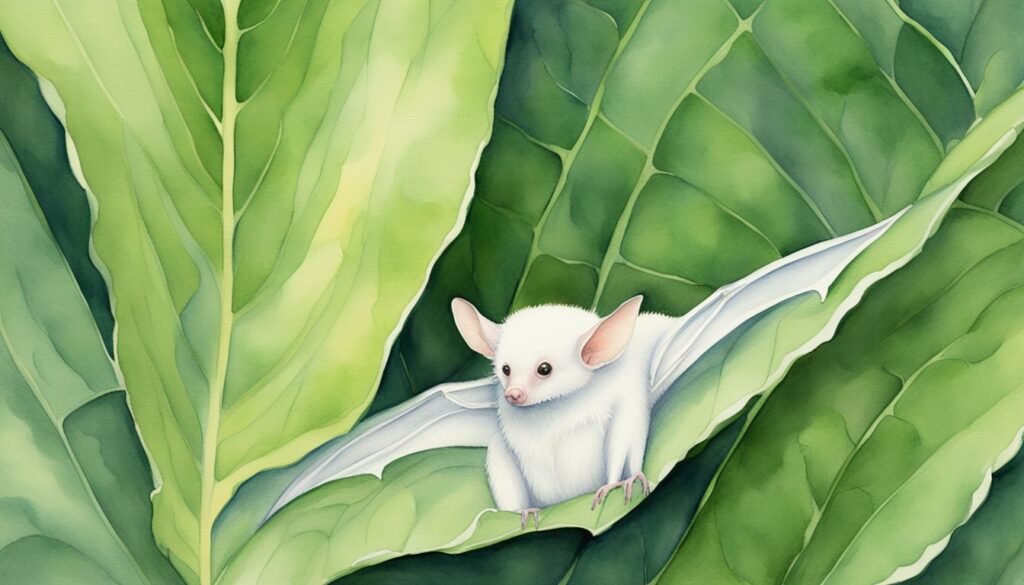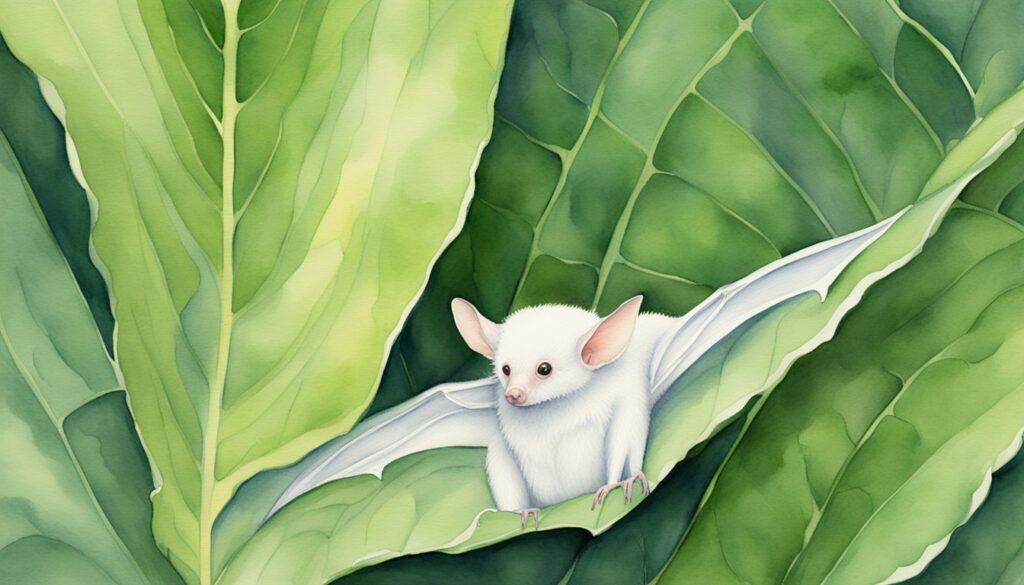The Honduran white bat, with its striking white fur and leaf-shaped nose, is a standout species in the bat world. Known scientifically as Ectophylla alba, this intriguing mammal is not just a wonder to behold but also boasts some unique characteristics among the Chiroptera order.
Physical Description
The Honduran white bat, also known as the Caribbean white tent-making bat, is a small, fluffy creature with a distinctive white fur coat. This coloration is unique, making it one of the few bat species with such a pale appearance. They have a prominent leaf-shaped nose and a distinctive yellow nose, which contrast sharply against their black wing membranes. Adult bats typically measure about 37 to 47 mm in length, supporting a relatively modest wingspan that reaches just over 10 cm.
Interestingly, they lack a tail, a common feature in many other bat species. The bats’ characteristic black membrane supports their wing structure, standing in stark contrast to their white body and lending them a striking appearance while in flight.
For more in-depth details on their physical description, you can visit this comprehensive study on the social behavior and vocalizations of the Honduran white bat.

Feeding Behavior
The Honduran white bat, known for its striking white fur and contrasting yellow leaf-like nose, makes its home in the lush rainforests of Central America. These distinctive leaf-nosed bats have a diet primarily consisting of fruit, with figs playing a major role in their nutrition. Their habitat range includes countries like Honduras, Costa Rica, Panama, and Nicaragua.
These frugivorous mammals exhibit specialized foraging behaviors that reflect their dietary reliance on select fruit species, especially figs. Using their sharp teeth, they skillfully extract the sweet and nutritious content from the fig fruits. The Honduran white bat’s feeding habits directly link to their habitat’s health, as various fig species, like Ficus colubrinae, provide the staple food source.

Constructing tents out of plant leaves, mainly heliconia leaves, provides shelter and plays a critical role in their survival. This tent-making habit protects them from predators and weather conditions, making it a unique adaptation to their rainforest environment. While foraging predominantly at night, the Honduran white bats continue to dazzle scientists and enthusiasts alike with their extraordinary adaptation to the specialized diet and habitat within the dense rainforest canopy.
Conservation and Threats
The Honduran white bat faces several pressures that have placed it on the IUCN Red List as near threatened. As their rainforest habitats dwindle and human populations expand, the species’ future hangs in a delicate balance. Predators such as snakes, owls, possums, and raptors also pose natural threats.
Protective Measures
Conservation efforts are crucial for the Honduran white bat, given their specialized habitat requirements and dependence on particular foliage for roosting. Protection of rainforest areas is paramount, as these bats construct “tents” from Heliconia leaves, which are susceptible to habitat loss. Initiatives that aim to preserve these bats’ habitats take a variety of approaches, from establishing reserves to promoting sustainable forestry practices that limit rainforest damage.
In regions where deforestation rates are high, local and international organizations collaborate to set aside protected land areas and support reforestation projects. Educational programs also play a vital role, informing communities about the importance of these bats in ecosystems and encouraging habitat protection measures amongst residents living near bat roosting sites.

